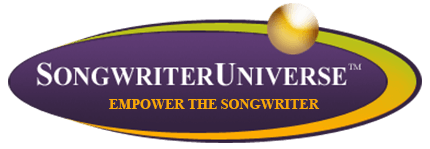NMPA CEO David Israelite Talks About The New Streaming Royalty Rate Agreement With The Copyright Royalty Board, And New Developments With Other Income For Songwriters & Publishers
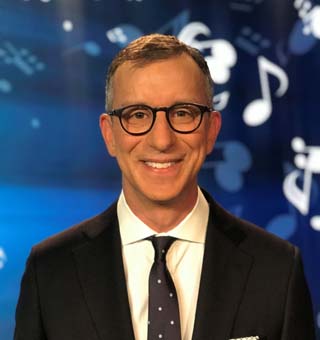
At the end of December (2022), the Copyright Royalty Board (CRB) approved a settlement struck by the NMPA (National Music Publishers’ Association), NSAI (National Songwriters’ Association International) and DiMA (Digital Media Association) for the highest rates yet for digital streaming. This agreement took effect in January (2023), and will increase incrementally over the next five years, from 2023 to 2027.
This settlement was initially proposed in August (2022), and is the culmination of years of negotiating between the NMPA, NSAI and the digital media companies such as Spotify, Apple Music, Amazon and Google. Under the new agreement, the headline rate will increase from 15.1% of revenue in 2023 to 15.2% in 2024, and then up a half a percentage point in each of the remaining three years, peaking at 15.35% in 2027.
With the announcement of this royalty rate deal, it seemed like a good time to speak again with David Israelite, President & CEO of the NMPA. Now in his 18th year as head of the NMPA, Israelite has been at the forefront of the fight to secure higher royalties for music publishers & songwriters.
In addition to this new CRB agreement for the years 2023-27, Israelite has been working hard to protect and retain the streaming royalty rates for the previous five years from 2018 to 2022. The rates that were decided by the CRB for this previous period were appealed by the digital streaming companies, which sought to lower rates. However, a decision should be announced soon that should lead to a major payment of back royalties to songwriters & publishers.
In our new interview with Israelite, he also discusses the latest developments regarding traditional (terrestrial) radio royalties and digital radio royalties (such as Siriux XM, Pandora and iHeart Radio). In addition, he discusses synchronization (sync) income from movies, TV, commercials and video games, as well as income from YouTube, TikTok and other revenue.
Before we start this interview, here is some information on the NMPA and Israelite. Founded in 1917, the NMPA (which is based in Washington, DC) is the trade association representing all music publishers and their songwriting partners. The NMPA’s mandate is to protect and advance the interests of music publishers and songwriters in matters relating to the domestic and global protection of music copyrights. Before joining the NMPA in 2005, Israelite, who is an attorney, served as Deputy Chief of Staff and Counselor to the Attorney General of the United States, and he was also Chairman of the DOJ’s Task Force on Intellectual Property.
Here is our new Q&A interview with David Israelite of the NMPA:
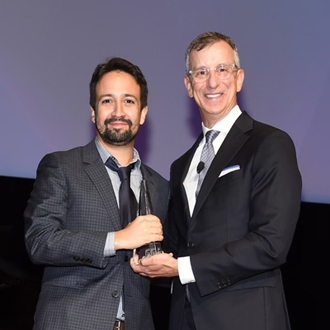
DK: The Copyright Royalty Board recently approved a new settlement for streaming royalties for songwriters & publishers for the years 2023-27. Can you talk about this new agreement?
David Israelite: Yes, we are thrilled that our settlement took effect on January 1st of this year, and that we have settled rates for the next five years. And those rates will be the highest rates in the history of digital streaming music. What’s exciting about looking ahead, is that when you combine the higher rates with subscriber growth at the services with price increases, which some of the services have announced, those things put together will lead to a very robust market for royalties for songwriters from digital music services.
DK: What are the new royalty rates for digital streaming?
Israelite: It is a similar structure to the rate that we’ve had, where you have to ask three different questions. It’s a three-pronged test, and we get the benefit of the highest of the three numbers.
The first prong of the three-part test is a percentage of their revenue. And on that, we start at a 15.1% of revenue, and that number will climb each year to get up to 15.35% of revenue.
The second prong is an alternate prong of a percentage of what record labels get. Since record labels get to negotiate their rates in a free market, we want to also benefit if their rates go up. And so now, the second prong will give us an increase to 26.2% of what record labels get. That prong is called the TCC prong, which stands for Total Content Costs. What that means is, if you’re looking at the revenue pool, in saying “Okay, what’s 15.1% of the revenue?” Then separately you would say, “Or, what is 26.2% of what record labels got? And which number is higher?”
Then the third prong is a minimum per subscriber that goes up to 60 cents for just the mechanical portion of it. It gets a little complicated, but basically on the third prong, you ask, “How many subscribers do you have?” You multiply that by 60 cents per subscriber, and then you add to that number whatever you paid the PROs for performance fees, and you say, “Is that third prong higher than the first two?” And so whichever test comes out at the highest number.
We do expect the first prong—the percentage of revenue—is likely to win out that race in most instances. That is particularly true when you have price increases. So with Amazon and Apple both announcing price increases, and we hope Spotify will do something similar in the future, that makes the percentage of revenue an even higher number that it used to be. And we think that’s likely to be the winner. But again, if the second or third prong happens to come out at a bigger number, we get the benefit of that.
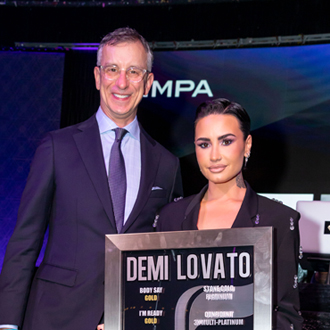
(photo credit: Barry Kramer)
DK: When we spoke a year ago, you said that the NMPA was still trying to collect the full royalties from the previous agreement, for the period of 2018 to 2022. Has the rates from this period been worked out?
Israelite: We’ve agreed on what to do for this year, 2023, going forward. What we are still waiting for is a final decision from the Copyright Royalty Board, over what the rate has been for the last five years. We are very close to that final decision; it could come out any day. We basically know what’s going to be in the final decision. But until it’s published in the Federal Register, it’s not in effect or an actual law. But when that comes out, then there’s about a 75-day window where there’s a legal process that goes on where you have a right to appeal it. You have a right to ask for a rehearing, and the Register of Copyrights gets to review it. But basically, around 75 days after, it starts a clock. And that clock is—they then have six months to pay us the money that we are owed from their underpayment over the last five years.
We have estimated that we will be owed somewhere in the neighborhood of $800 million. When that decision is final and when those 75 days have passed, and when that six month clock starts ticking, we will then know when we will be owed the makeup money, and we will know definitely how much we are going to be owed, because we can apply the actual formula to the numbers.
The services then have to do what’s called an accounting. They have to go back to January of 2018, and redo every month for five years the formula, and apply the proper rate structure, and then they have to make it right. So it’s going to be a messy process. It’s unfortunate that it’s only happening because what the digital companies did, which was trying to fight the last rate and then pay us under an old rate while that fight was going on. But ultimately, we will get paid back the money that we are owed and it will be a big infusion into the industry.
DK: What’s the status of royalties from traditional, terrestrial radio play? Does it remain high even though streaming has increased in popularity?
Israelite: It’s a great question. As most of your readers are aware, radio is purely a public performance right, which means it is licensed and collected and distributed by our performance rights organizations: ASCAP, BMI, SESAC and GMR (Global Music Rights). It is unfortunate that the PROs do not disclose any information about how much money they collect and distribute by source, meaning that they do not tell you how much of the money they collected from radio, compared to the totality of what they collect. That is information that I think the public should know, and would be helpful to know. We do our best to try to reverse engineer that number by looking at royalty statements and trying to figure out exactly what that meant. So right now, we are starting to study the year 2022. We have the information on 2021. In 2021, radio represented 10.12% of the total royalty pool. So just over 10% of the industry’s revenue—all publishers and songwriters—came from radio. It made about 20% of what the PROs collected. Now again, we know that not because the PROs tell us that. We know that because we try to reverse engineer the revenue streams from statements that go to the publishers. By the way, the raw number for 2021 was about $476 million of what we collected from radio. We don’t yet know the number for 2022, but I should know after the end of March, I will start getting the data from 2022, and I’ll be able to compare it to 2021 and make a judgment as to whether radio was growing or shrinking.
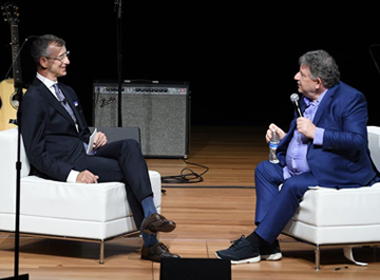
I think that we’re very worried about radio because radio is really two different parts that get put together. You have what’s known as terrestrial radio which is your traditional AM/FM broadcast radio. But then you also have digital radio. Digital radio includes XM Sirius, Satellite radio, Pandora radio and iHeart Radio. The reason why we’re so concerned about radio is because in the United States, you have a very weird situation where record labels and artists don’t collect anything from terrestrial radio. It’s wrong, it should change, but that’s the state of the law. And in history, the publishers and songwriters always thought of radio money as something that made up for the other rates that they were getting paid less than record labels.
But in 1995, record labels and artists were given the right to collect from digital radio. And what has happened over the last 20 plus years, is that record labels and artists are collecting so much more money from digital radio, that it’s dwarfing what we collect from digital radio. Now in the rest of the world, radio models tend to split the money 50/50. That’s why they call the label right a neighboring right to the publishing right. But in this country, on digital radio, record labels and artists are collecting six times the amount of money that we are collecting from digital radio, and when you combine all radio together in the United States, where record labels and artists get nothing from terrestrial radio, they are still getting twice as much radio money as songwriters and publishers because they are getting the lion’s share of digital radio money. This is a major problem.
DK: How do you fix that?
Israelite: The American PROs need to become more vigilant about fighting for equal rates on digital radio. This is something that we have raised publicly, that we have discussed directly with our friends at the PROs. And I’m hopeful that they will take up this cause because if you are a songwriter, and you are used to collecting all of the money from radio when it was just terrestrial radio, you are looking at a future where only 1/7 of the digital radio money is coming to songwriters, and the rest is going to artists and labels. And that needs to be corrected.
DK: Currently, how does the revenue from digital radio compare to terrestrial radio, for songwriters & publishers?
Israelite: One of the things that people can look at is SoundExchange, which is the performance rights organization that was created to license and collect the money on digital radio for record labels and artists. SoundExchange is now collecting nearly a billion dollars a year. And they’re only getting that money from digital radio. They don’t have other performance rights like we do, such as from bars and restaurants, or digital video and things like that. So SoundExchange is now collecting around a billion dollars a year, which is just about the amount that ASCAP collects. And ASCAP has so many varied sources. So because we know how much radio money we’re getting in total, which was about $476 million dollars, and we know that SoundExchange is collecting around a billion dollars, you can get a sense that it’s a 2 to 1 gap for total radio, and SoundExchange collects nothing from terrestrial radio. So even though that is wrong and record labels and artists should get paid from terrestrial radio, I think the bigger problem is how little we’re collecting from digital radio for songwriters.
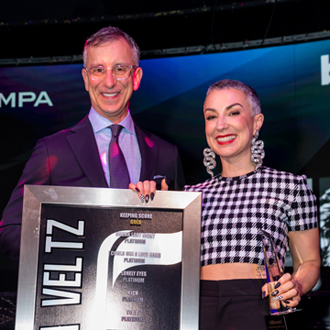
(photo credit: Barry Kramer)
DK: It’s now been two years since the Mechanical Licensing Collective was launched. Can you give a progress report on The MLC?
Israelite: I recently met with Kris Ahrend, who runs The MLC. I think The MLC is doing a fabulous job. I say that based on several factors. First of all, they are matching at a higher rate than the digital companies ever matched before The MLC was created. So one of the reasons to create The MLC was to do a better job of finding the proper owners and paying the money properly. And The MLC is already doing a better job at doing that.
The second thing which people should not forget is that The MLC is now distributing all of the money from mechanical royalties with zero commissions. Because The MLC is funded by the digital companies that use it, there is no commission taken out of the royalty pool. It is the only society in the world where that it is true. If you get distributions from any other society including the American PROs or from SoundExchange, there is a commission taken out of the royalty pool, which means it’s the creators who are paying for the administration. But not for The MLC. The MLC is funded entirely by the users, which means the creator gets a dollar on the dollar.
The third thing is, we now have a transparent and public database. It’s the only one in the world. Anyone can have a copy of The MLC database. And I think that’s fundamentally changing the way we think about music data. We still have to deal with all of the historical, unmatched money that was given to The MLC by the digital companies. But they are doing a very good job of locating the proper owner and paying that out. And all of the money now is out of the hands of the digital companies, which is also a big victory. So I think The MLC gets an “A” grade for its first two years, and I’m excited about watching it continue to grow, because the royalties that are going to get paid now under this new rate structure are going to increase over the next several years. It is already the #1 revenue source for songwriters & publishers, and it’s only going to grow. So it’s really important that The MLC do a good job.
DK: In the past week, I’ve read two good articles about songwriter royalties, in the Washington Post and in Rolling Stone. These publications interviewed several pro songwriters, who complained that it was difficult for songwriters to make a living. They said album cuts are no longer worth much, and every writer is just hoping to get the single. Can you talk about the struggle of many songwriters to make a living?
Israelite: Yes, I read both articles, and it’s painful to read stories about individuals who are struggling because of the way that the industry is working today. I think one of the things that has happened as you move to a streaming model away from a sales model, is that you really are only getting the money flowing to the hit songs. It used to be true that if you had a song on an album, every songwriter got the same amount regardless of whether that song was a radio hit or not from the sale of the album. So if you had a 15-song album, and one of the songs was a big hit, the writers on the other 14 songs made the same amount as the writer of the hit on that album when you sold the album. But in a streaming world, where you’re listening to only singles, the compensation is only going to those hit songs. So that is a change that is not something that can be controlled by the music industry, because it was really consumers that drove that change in terms of how they want to access music. But it’s an effect of that change that I don’t think enough people recognize, which is that a lot of what I would call the “middle class songwriters” that were writing professionally and getting cuts on albums, they’re not making the same amount of money in a streaming world.
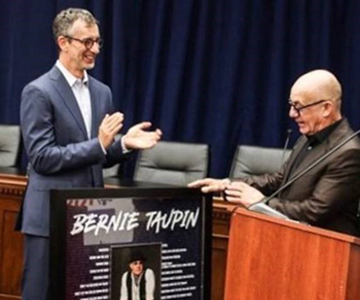
The other thing that is also true, is that it’s now so easy to produce music and get it uploaded to these streaming sites, that you have more people than ever making something from music. There’s a very long tail. But that doesn’t mean that the professional full-time songwriter is doing as well. It just means that more people may be making a little bit of money because of the volume of music that’s now being produced and available on the streaming services. So it’s very tough to be a songwriter. And look, we should be honest about this. Not everybody deserves to make a living by writing songs. Just because you spend all your time doing it, doesn’t mean that you have a right to be successful at it or make a living at it. But what I’m most concerned about, is that people who are good songwriters…people who are professional, talented people whose songs are being recorded, are having a harder time. And that’s unfortunate. That’s why the royalty rates are so important, and expanding the opportunities is so important and finding new revenue sources. And enforcing the rights, so people aren’t using the music without a proper license. All of those things are contributors toward trying to address what is a real crisis.
DK: Besides mechanical and performance royalties, there’s synchronization income from movies, TV, commercials and other media. Currently, what percentage of overall income comes from sync?
Israelite: Synchroinization is a term that in the music industry used to mean, when you would synchronize a single song for a single purpose. So people thought of it as, you put a song in a movie, in a TV show, in a commercial…that was a synchronization. There would be a negotiation over the value. The record label and the publisher would generally get the same amount of money, because you needed both permissions. And sync was always an important part of the industry.
What has changed is that there is a different category of synchronizations other than the single-source synchronizations. You now have what is called mass synchronization. These are platforms that use a lot of music in lots of different videos.
Probably the best examples of mass synchronization would be YouTube and TikTok. You’re not licensing a single song for a single use. You’re licensing an entire platform for all the music in the world, and this is the fastest growing part of the industry. And so synchronization in 2021 represented about 26% of the total revenue for the industry. Again, we don’t have the 2022 data yet, but we will have it soon. And I suspect that number will be even bigger. So things that didn’t even used to be categories, like in-home fitness, or video games, are categories of synchronization now that are becoming significant contributors to the bottom line. So I think that mass synchronization will be in the near future, the most important growth growth area, because so many of the new uses of music are in that type of a platform where there is video involved.
The good news about mass synchronization, is that it’s not regulated by law like the mechanicals are. It’s not regulated by consent decrees like the performances are. It’s in a free market. The challenge of synchronizations, is that many of the people that do it are protected by a law that’s called the Digital Millenium Copyright Act, or the DMCA. And what the DMCA basically says is that if you are a platform that has lots of music and video on your platform, put up by other people, that you’re not liable for copyright infringement. You just have to take certain measures if you’re told that material on your platform is infringing. So when you think about a YouTube or a TikTok, it is mostly content that is put up by the users of those platforms. Not by YouTube or TikTok properly. And when you have a company that is protected by the DMCA, it is not really a negotiation over the price of music, because if you don’t agree on what to pay for the music, it’s not like they have to take all the music down. Instead, they just have to respond to the DMCA process, which is very burdensome and costly and hard on the music producers. So that’s one of our biggest challenges.
Then the other big challenge when it comes to getting a fair price on these mass synchronization sites, is that often the creators themselves don’t want their music taken off because it’s a place where they engage with so many of their fans. They promote what they’re doing, whether it’s touring or other merchandise. So if you want to play hardball with a site and take down music using the DMCA, your own writers or your own artists may object because they may want higher prices, but yet they’re not willing to pay the price of removing their music as part of that negotiation. So it’s a tricky area when dealing with mass synchronization. But I think what’s really the bright spot is that this is where a lot of the new activity is, and therefore I think it’s one of biggest growth potentials in the near future.
DK: Thank you David for doing this interview. Is there anything that we haven’t talked about yet, that you’d like to mention for this article?
Israelite: Probably just one thing, which is our continued struggle with Twitter. Twitter is the last of the major social media sites that has not agreed to license music and pay songwriters. And it really is a shame because there’s a lot of music on Twitter. So we have been engaged for a long time at using this DMCA law that I spoke about, to take down music from Twitter. The hope is that ultimately Twitter changes its approach and wants to become business partners with the music industry. So I would pay attention to Twitter, because I think it’s the biggest social media site that doesn’t license the music. It should be licensing music, and I think unless they change their approach, there’s going to be a lot of conflict between creators and Twitter in the future.
- Pop/Soul Singer/Songwriter RuthAnne, Who Has Written Several Hits, Talks About Her Excellent New Solo Album, The Moment - September 9, 2025
- Caitlin Mae’s “House Sitting” Named September “Best Song Of The Month” - September 8, 2025
- Rising Artist Bebe Stockwell Talks About Her Excellent EP, Driving Backwards, Her Song “Minor Inconveniences,” And Her Songwriting - August 27, 2025
